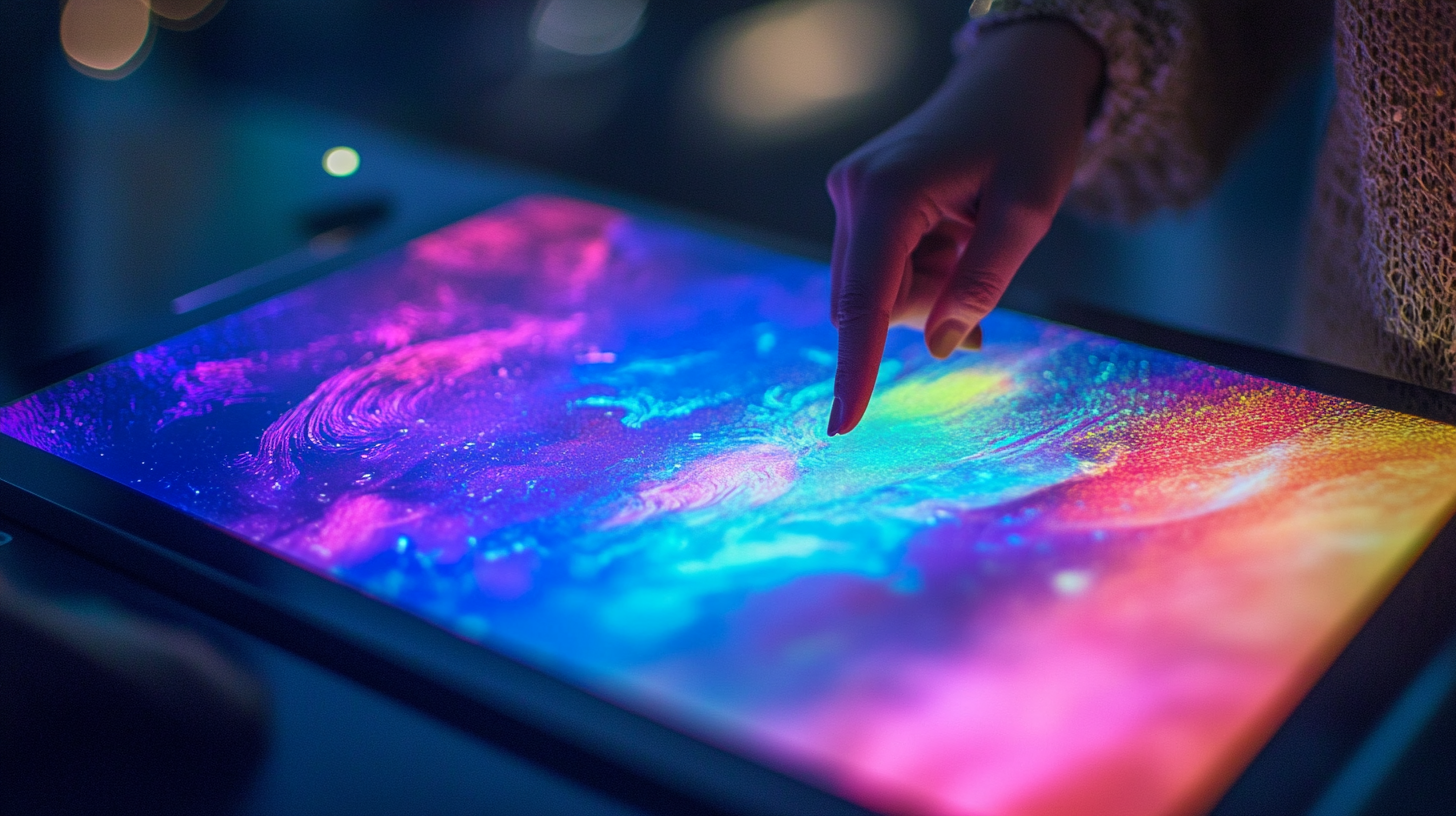Leave Your Message
In today's fast-paced technological landscape, consumer demand for intuitive and user-friendly interfaces has soared, particularly within the realm of electronic devices. According to a report by MarketsandMarkets, the global market for touchscreen displays is projected to reach $98.9 billion by 2025, with a significant portion driven by the adoption of Capacitive Touchscreen Display Modules. These modules offer superior responsiveness and enhanced visual clarity, making them an essential component for modern product designs across various industries, including consumer electronics, automotive systems, and medical devices.
Optimizing product design by integrating Capacitive Touchscreen Display Modules not only enhances user interaction but also aligns with current consumer expectations for seamless usability. Research indicates that products featuring advanced touchscreen technology experience up to 40% increased customer engagement compared to their counterparts with traditional interfaces. As designers and manufacturers strive to meet these emerging needs, the strategic incorporation of capacitive touch technology stands as a critical step in delivering products that are not only functional but also remarkably engaging and efficient.

Capacitive touchscreen technology has revolutionized the way users interact with devices by enabling a more intuitive and responsive interface. Unlike traditional resistive touchscreens, which require physical pressure to register inputs, capacitive touchscreens detect touch based on the electrical properties of the human body. This allows for multi-touch capabilities, enabling users to perform gestures such as pinching, zooming, and swiping, thereby enhancing the overall user experience. One of the major advantages of capacitive touchscreens is their high sensitivity and accuracy. This technology can deliver instantaneous feedback, which is crucial for applications where quick response times are paramount. Additionally, capacitive touchscreens are known for their durability, as they are made of glass or hard surfaces that resist scratches and wear compared to other materials. The clarity and brightness of the display are often superior as well, offering vibrant visuals that enhance product aesthetics and user engagement. Moreover, the integration of capacitive touch technology in product design allows for sleeker and more modern device silhouettes. By eliminating the need for physical buttons, designers can create devices with a seamless appearance, aligning with current trends in minimalism and functionality. This not only improves the visual appeal but also opens up new possibilities for innovative product features, ultimately providing users with a more sophisticated and interactive experience.

When designing products that incorporate capacitive touchscreen display modules, several key considerations can significantly influence both usability and market success. According to a report by Grand View Research, the global capacitive touchscreen market is expected to reach USD 34.3 billion by 2025, which highlights the growing importance of integrating these technologies into everyday products. To stand out in such a competitive landscape, designers must prioritize user experience and interface design.
The first critical consideration is the choice of touchscreen technology. Capacitive touchscreens offer a variety of functionalities, including multi-touch capabilities, which are essential for creating intuitive interfaces. A report from MarketsandMarkets states that the demand for multi-touch functionality is increasing, with a projected growth rate of 9.3% from 2020 to 2025. Therefore, understanding how users interact with touchscreens can facilitate better product designs that enhance engagement and satisfaction.
Furthermore, it’s essential to consider the environmental context in which the product will be used. For instance, devices that are meant for outdoor or industrial environments require screens that are not only responsive but also durable. According to research published by the Touch Display Research Group, rugged displays can reduce failure rates by up to 40%, emphasizing the need for robust design when selecting materials and technologies for touchscreen modules. Balancing aesthetics, functionality, and durability ensures that products not only attract customers but also withstand real-world conditions.

Integrating capacitive touchscreens into various applications is transforming the way users interact with technology. These displays offer a seamless experience by allowing users to engage with devices through intuitive gestures, such as pinching and swiping. As industries increasingly seek to enhance user engagement, capacitive touchscreens have become essential components in products ranging from smartphones to industrial control panels.
One of the remarkable benefits of capacitive touchscreens is their versatility. They can be seamlessly integrated into medical devices, home appliances, and automotive interfaces, providing a modern, user-friendly interface. For instance, in the healthcare sector, touchscreens simplify the operation of complex medical machinery, allowing for quick adjustments and clear visual displays of vital information. In the automotive industry, they serve as central hubs for navigation and multimedia control, improving safety and convenience for drivers.
Moreover, the design of capacitive touchscreens can be customized to suit specific applications. Manufacturers can modify screen size, resolution, and tactile feedback, ensuring that the end product meets the functional requirements and aesthetic preferences of the target audience. This level of customization not only enhances the usability of the device but also contributes to branding efforts by aligning the product's design with the company’s identity, making capacitive touchscreens an invaluable asset in modern product development.

In the realm of product design, optimizing user experience with capacitive touchscreen display modules is pivotal. These touch interfaces are not just about sleek designs; they are about creating meaningful interactions that resonate with users. To enhance user experience, designers should focus on intuitive navigation, ensuring that touch gestures feel natural and fluid. This can be achieved by implementing standardized touch gestures that users are familiar with, thus reducing the learning curve and fostering a sense of familiarity.
Moreover, the incorporation of visual and tactile feedback is essential. Users should receive immediate responses to their interactions, whether it’s a visual change on the screen or a subtle haptic response. This feedback loop reassures users that their inputs have been recognized, enhancing their overall experience. As trends in UI design evolve, integrating elements such as 3D interactions and personalization can further enrich these touch interfaces, making user interactions not only functional but also engaging.
Additionally, attention must be paid to accessibility in touch interface design. Ensuring that all users, regardless of their physical abilities, can interact seamlessly with touchscreen products is crucial. This involves designing interfaces that accommodate diverse user needs, such as adjustable touch sensitivity and easily navigable layouts. By embracing these best practices, designers can significantly improve user experience with capacitive touchscreen displays, resulting in products that are not only innovative but also user-friendly.
Capacitive touchscreen displays are widely used in various applications due to their responsiveness and user-friendly interfaces. However, like any technology, they can encounter issues that affect their performance. One common problem is a lack of responsiveness, often caused by the presence of unwanted objects or moisture on the screen. Users should ensure that the display surface is clean and dry, as even the slightest residue can disrupt the capacitive field necessary for touch recognition. Regular maintenance and cleaning can mitigate this issue significantly.
Another frequent challenge is ghost touches, where the screen registers touches that were not made by the user. This can be particularly frustrating in situations where precision is crucial. Ghost touches may stem from electrical interference, such as using the display near strong magnetic or electronic fields. To resolve this, it’s advisable to shield the device from potential sources of interference and to use quality components during the design phase, ensuring that all parts function harmoniously together.
Additionally, calibration issues can arise, leading to inaccurate touch responses. Improper calibration can be addressed by implementing regular software updates that enhance touch sensitivity and accuracy. Developers can also integrate a recalibration feature in the device's settings, allowing users to easily adjust touch functionalities based on their preferences. Understanding these common issues and their solutions can greatly optimize the user experience with capacitive touchscreen displays.
